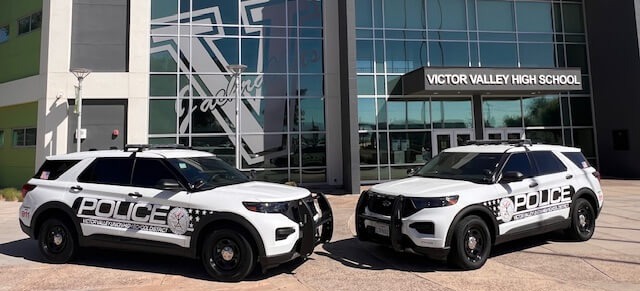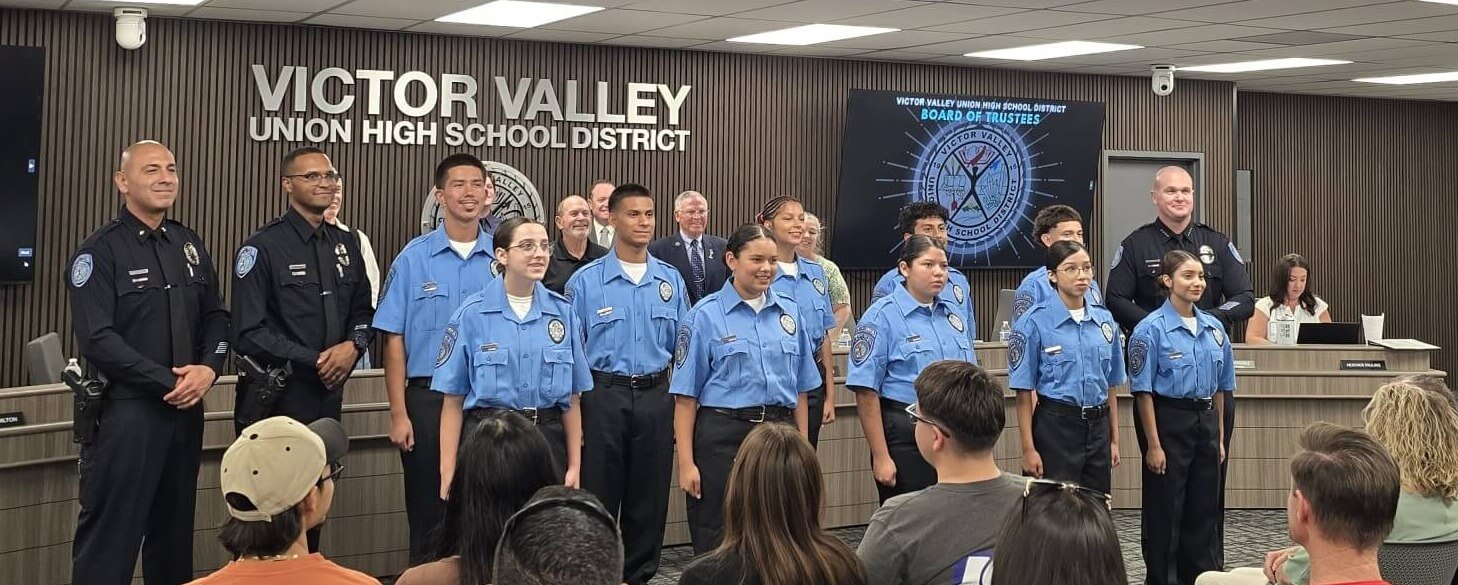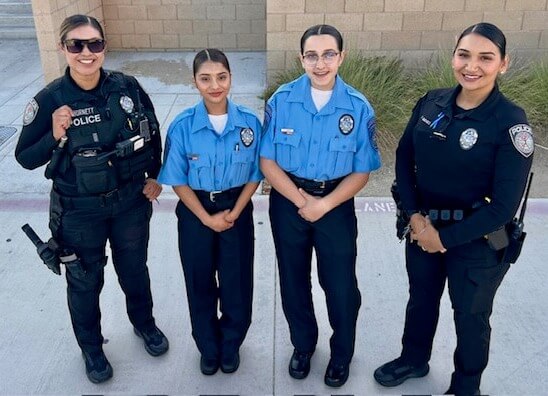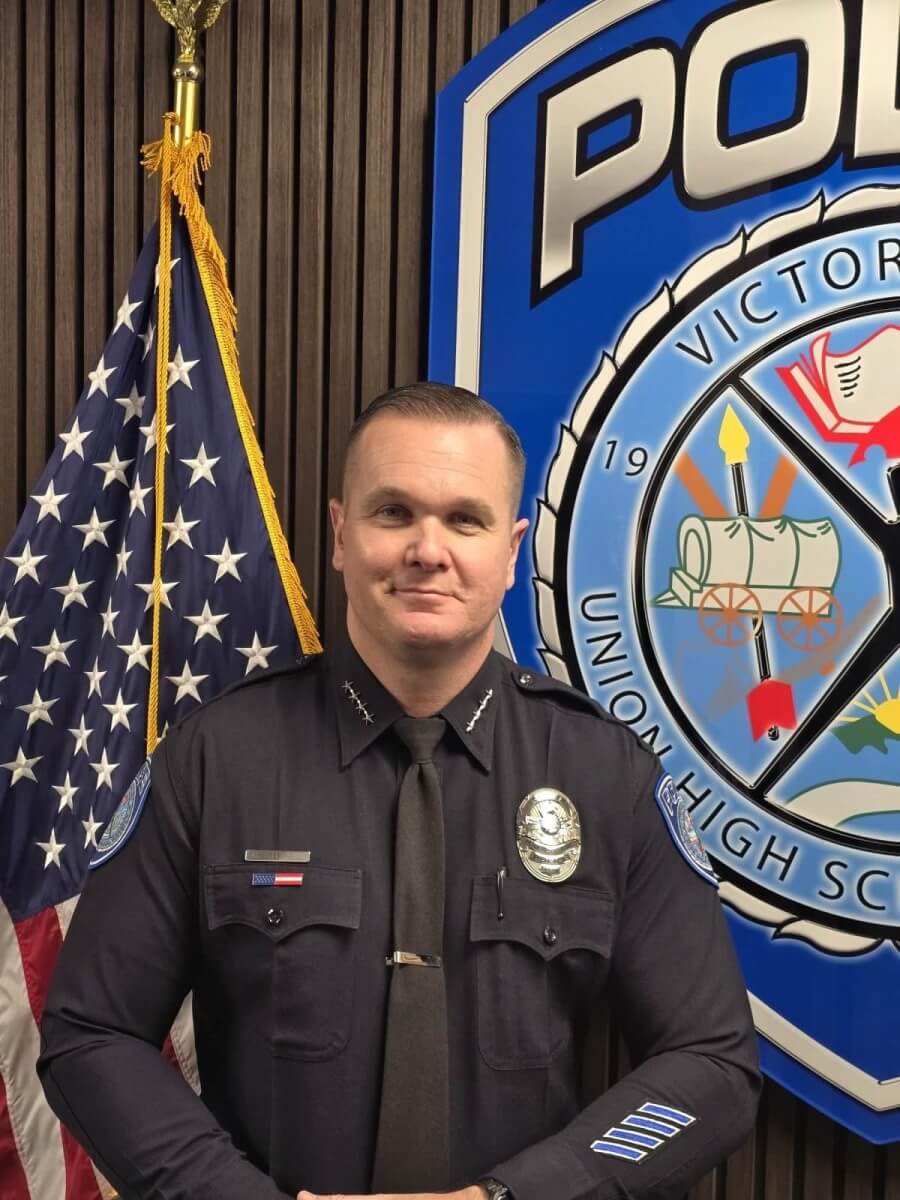Safeguarding the Learning Environment: Why School Districts Should Consider Their Own Police Departments
A New Model for School Safety
California’s schools face complex safety challenges: youth mental health crises, community violence spilling onto campuses, and heightened expectations from parents and educators. Many districts rely on contract services with city police or county sheriffs. While effective in some cases, those models often lack continuity, focus, and the specialized training today’s campuses require.

At Victor Valley Union High School District, the decision was made to build our own police department from the ground up. It wasn’t easy, but the results have been transformative—for safety, trust, and the student learning environment.
“School police must be more than law enforcement officers. They must be guardians, mentors, and collaborators in education.”
Challenges Along the Way
Creating a district police department is not without its challenges. Funding and budgeting are at the forefront, as startup costs are significant and require careful planning, requiring an alignment with district priorities and LCAP (Local Control and Accountability Plan) goals, actions, services, and expenditures. Policy development is equally demanding, as every procedure must comply with POST standards while also meeting both Penal Code and Education Code requirements.
Recruitment and training also demand a specialized focus. School-based officers must not only be capable law enforcement professionals but also mentors, educators, and role models. They must be trained in restorative practices, trauma-informed response, and cultural competency—skills not always emphasized in traditional agencies.
Perhaps the most significant challenge is earning community buy-in. Parents, teachers, and administrators must be assured that this change is not about punitive enforcement, but about creating a safer and more supportive environment. Finally, there are infrastructure demands—everything from communications systems to vehicle fleets and compliance reporting systems must be built from the ground up. Each of these challenges requires vision and persistence, but they ultimately serve as investments in long-term success.

Why It’s Worth It
Despite the obstacles, the benefits of a dedicated school district police department are substantial. Unlike contract policing, student-centered officers are embedded in the school environment, focusing on mentorship alongside enforcement. This continuity builds trust: students see the same officers every year, forming meaningful relationships that reduce fear and increase willingness to confide.
Having a department of our own also allows for tailored programming. In Victor Valley, this has meant initiatives such as RISE Court, a restorative justice model, and IMPACT Tickets, which celebrate students for positive actions. Over time, owning the department provides cost stability compared to escalating contract fees, while emergency preparedness improves because drills, training, and crisis plans are built specifically for our campuses. Most importantly, the department is directly accountable to the superintendent and school board—ensuring that safety always aligns with the educational mission.
Education Vision: Building Pathways to Public Safety Careers
What sets our model apart is not just how we police, but how we integrate policing into the educational vision of our district. We believe that school safety is inextricably linked to student opportunity. To that end, we have created Career Technical Education (CTE) Public Safety Pathways at all three of our comprehensive high schools.
These pathways enable students to explore careers in law enforcement, fire services, and emergency medical services while earning academic credit. But we are going further. We are building partnerships with local community colleges to expand dual enrollment opportunities, allowing students to graduate from high school already on their way to earning an Associate of Arts degree in Criminal Justice.

From Classroom to Career: Explorers, Cadets, and Officers
Education is not just theory—it must connect to lived opportunities. That is why our police department has launched an Explorer program, which gives students firsthand exposure to law enforcement. Explorers train alongside officers, volunteer at community events, and learn the responsibilities of policing.
The Explorer program aligns seamlessly with the CTE pathway, providing experiential learning that complements classroom instruction. But we don’t want the journey to end there. Our vision is to hire our own students into a Police Cadet program, giving them paid employment while they attend college. Eventually, those cadets can transition into full-time officers within our own department.
Imagine the power of this pipeline: a student enters the CTE pathway in high school, participates in Explorers, transitions into a cadet role while pursuing an AA in criminal justice, and then applies to become a sworn officer—all within the same community where they grew up. That is not just workforce development—it is a full-circle investment in students and the future of public safety.
“A student could begin in high school, earn an AA in criminal justice, and prepare themselves for a career—all while serving their community along the way.”
What We’ve Seen in Victor Valley
Since forming our department, the outcomes are clear. Safety metrics have improved with a decline in serious campus incidents. Relationships are stronger—students now approach officers with trust and confidence. Restorative opportunities, such as RISE Court, will divert students from the criminal justice system, while positive recognition through IMPACT Tickets reinforces good citizenship.
Equally important, parents and staff report higher confidence in school safety, knowing that officers are accountable directly to the district. These outcomes demonstrate that a district police department can do more than enforce laws—it can shape culture, build opportunities, and safeguard the learning environment.
Why Other Districts Should Consider It
California is at a crossroads. The debate over school policing often frames it as “all or nothing.” However, there is a third path: district-owned police departments that strike a balance between safety, equity, and restorative justice, while also providing meaningful career pathways for students.
For districts struggling with rising contract costs, inconsistent officer assignments, or pressure to align safety with educational outcomes, establishing a department is a bold but practical solution. It is not just about security; it is about creating opportunities and building community resilience.
Bridging the Gap: Municipal and School Policing Partnerships
Community safety is strongest when municipal agencies and school police departments collaborate closely. Having spent 18 years between the Los Angeles County Sheriff’s Department and the San Bernardino County Sheriff’s Department—including four years as a School Resource Officer—followed by seven years in school policing leadership with Val Verde Unified and now Victor Valley, I have seen both sides of this conversation.
Municipal chiefs bring the resources, investigative capacity, and citywide perspective that school districts rely on. K-12 chiefs bring specialized expertise in youth engagement, restorative practices, and the day-to-day realities of campus life. When we collaborate, we ensure consistency in response, reduce duplication of effort, and build seamless safety nets for students who live, learn, and play across both jurisdictions.
For California communities, the partnership between municipal chiefs and K-12 chiefs is not optional—it is essential. Together, we safeguard not just campuses, but the neighborhoods, families, and futures that surround them.
Closing Thoughts

The work is challenging, but the outcomes are undeniable. A district police department safeguards the learning environment, builds continuity in officer-student relationships, and aligns law enforcement with the educational mission. Most importantly, it creates a bridge between student safety and student opportunity.
At Victor Valley, we believe in more than policing schools—we believe in preparing students for careers, leadership, and service. Our journey shows that student-centered policing is not just possible—it is essential. And for school districts across California, the time to consider this transformative model is now.
Sidebar: 5 Questions Every District Should Ask Before Starting a Police Department
- What is our mission? Are we replacing a contract—or building a student-centered model?
- How will we fund it? Have we explored zero-based budgeting, LCAP, and grants?
- Who will lead it? Do we have leaders with both law enforcement and educational vision?
- How will we earn trust? What strategies ensure buy-in from parents, students, and staff?
- What outcomes do we expect? How will we measure success—safety metrics, restorative outcomes, or career pipelines?
About the Author:
 Chief Christopher Stowell serves as the inaugural Chief of Police for the Victor Valley Union High School District Police Department, where he is leading the development of a new agency dedicated to student safety, community trust, and innovative policing practices. He brings over 24 years of law enforcement experience, having served with the Los Angeles County Sheriff’s Department, the San Bernardino County Sheriff’s Department, and the Val Verde Unified School District Police Department. Chief Stowell is a graduate of the FBI National Academy (Session 286), holds a bachelor’s degree in Emergency Management, and earned a master’s degree in Public Safety from the University of Virginia. He is recognized for his commitment to community engagement, emergency preparedness, and building pathways for students into careers in public safety. Chief Christopher Stowell serves as the inaugural Chief of Police for the Victor Valley Union High School District Police Department, where he is leading the development of a new agency dedicated to student safety, community trust, and innovative policing practices. He brings over 24 years of law enforcement experience, having served with the Los Angeles County Sheriff’s Department, the San Bernardino County Sheriff’s Department, and the Val Verde Unified School District Police Department. Chief Stowell is a graduate of the FBI National Academy (Session 286), holds a bachelor’s degree in Emergency Management, and earned a master’s degree in Public Safety from the University of Virginia. He is recognized for his commitment to community engagement, emergency preparedness, and building pathways for students into careers in public safety.
|





 Chief Christopher Stowell serves as the inaugural Chief of Police for the Victor Valley Union High School District Police Department, where he is leading the development of a new agency dedicated to student safety, community trust, and innovative policing practices. He brings over 24 years of law enforcement experience, having served with the Los Angeles County Sheriff’s Department, the San Bernardino County Sheriff’s Department, and the Val Verde Unified School District Police Department. Chief Stowell is a graduate of the FBI National Academy (Session 286), holds a bachelor’s degree in Emergency Management, and earned a master’s degree in Public Safety from the University of Virginia. He is recognized for his commitment to community engagement, emergency preparedness, and building pathways for students into careers in public safety.
Chief Christopher Stowell serves as the inaugural Chief of Police for the Victor Valley Union High School District Police Department, where he is leading the development of a new agency dedicated to student safety, community trust, and innovative policing practices. He brings over 24 years of law enforcement experience, having served with the Los Angeles County Sheriff’s Department, the San Bernardino County Sheriff’s Department, and the Val Verde Unified School District Police Department. Chief Stowell is a graduate of the FBI National Academy (Session 286), holds a bachelor’s degree in Emergency Management, and earned a master’s degree in Public Safety from the University of Virginia. He is recognized for his commitment to community engagement, emergency preparedness, and building pathways for students into careers in public safety.